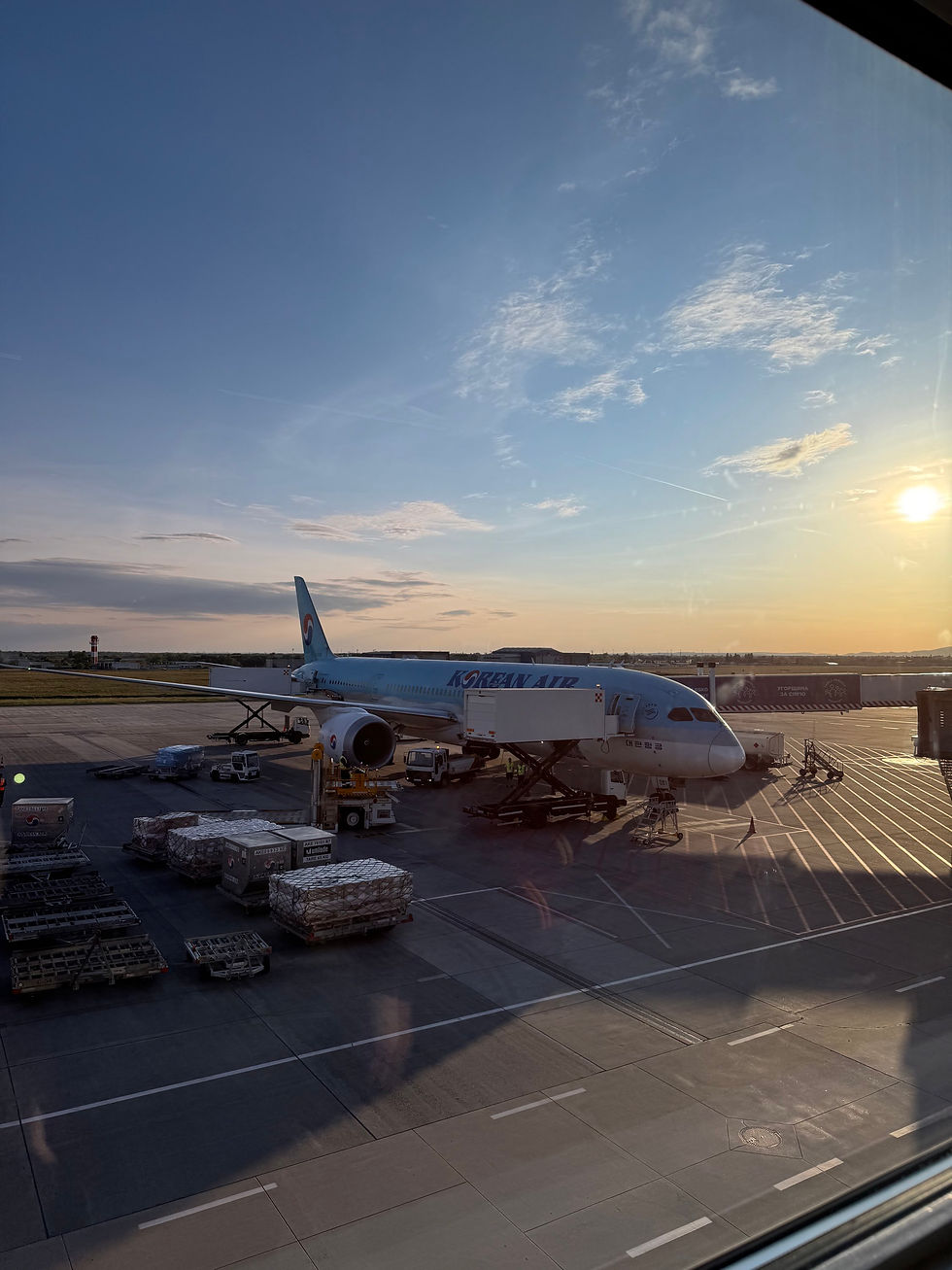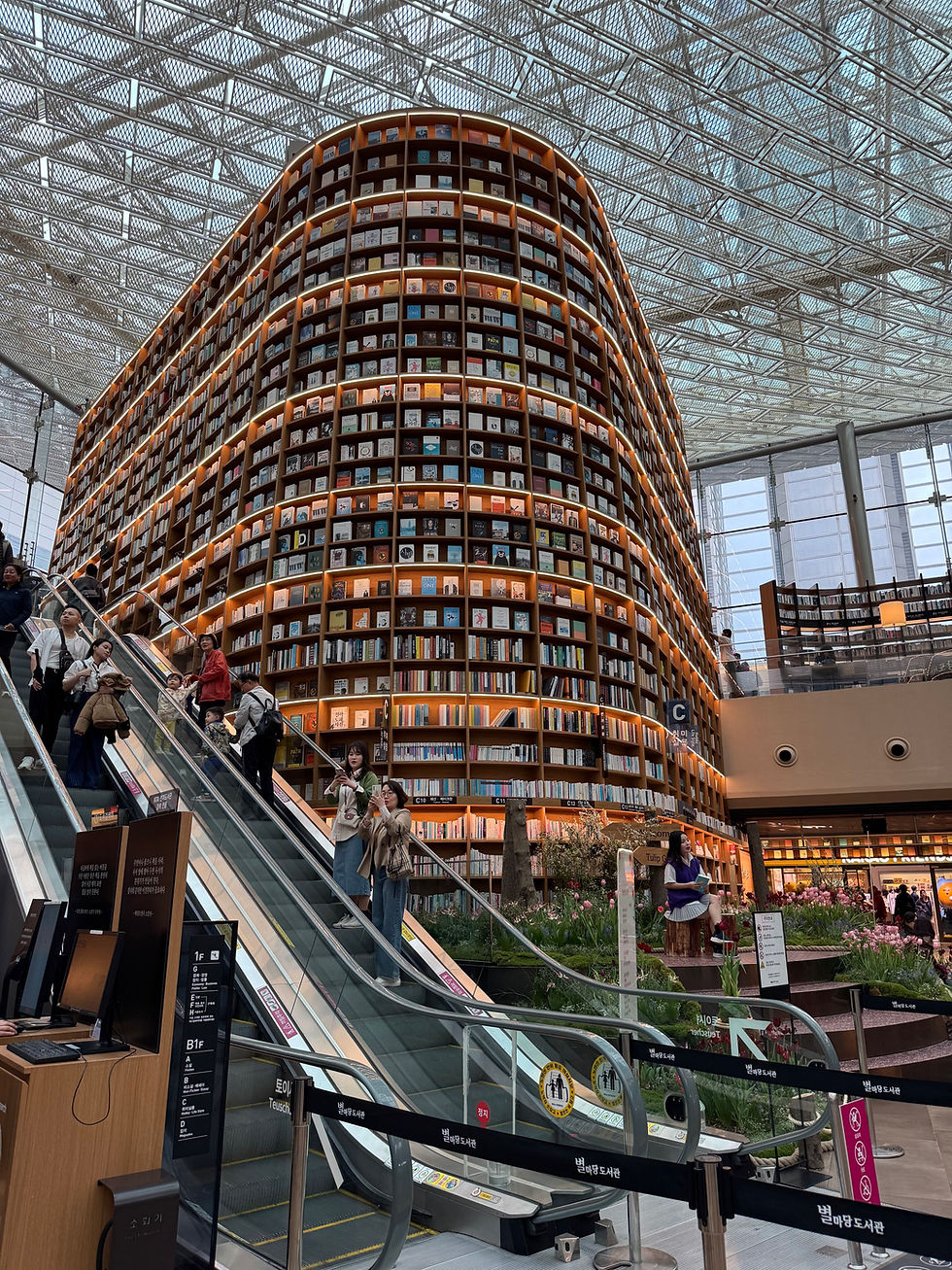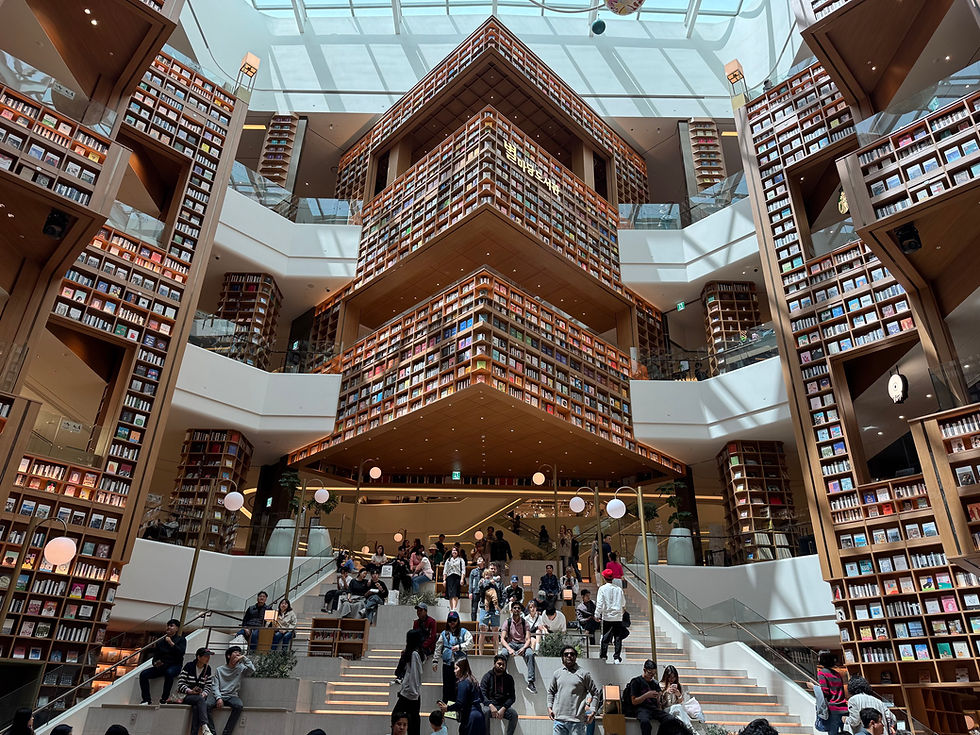Seoul City Guide: Exploring the Heart of South Korea
- Bernadett

- Aug 4
- 6 min read
Updated: Aug 21
The history of South Korea begins with the Japanese surrender in 1945 during the World War II. During that period, Korea was split, with the Soviet Union administering the north and the United States overseeing the south. While the Soviets declined to allow elections in the North, the United States proceeded with elections in the South. In 1950, the Korean War began. North Korea overrun South Korea. By the war's conclusion in 1953, the border between North and South Korea was mostly unchanged. Tensions between the two sides persist. Seoul is the capital city with its 10,3 million habitants and at the same time the largest city of the Republic of Korea. The country covers an area of 97,230 km² on the Korean peninsula. The population of South Korea is 51,67 million people. Buddhism and Christianity are the most widely practiced religions, but most of the people aren't so religious (44%). The country is also famous for K-dramas and K-pop. K-beauty products are also very popular all over the world.
At the end of April, I had the opportunity to explore South Korea with my husband and our 2-year-old son. We began our journey in Seoul, where we spent several days visiting the major attractions of the capital city.
Flight with a toddler
We had got a direct flight from Budapest to Seoul by Korean Air. The flight was a red eye, so our son slept a lot during the long journey (10:30 hours). The meals were quite good. My husband and I ate bibimbap, and our son had a kids' meal. This was the first time that our son has got his own seat. He slept, ate, and played, then repeated it. Since he had his own seat, sleeping comfortably wasn't a problem. As a result, the entire flight proceeded smoothly without any tantrums. On our return trip, our flight (12 hours) was scheduled during the day, at a time when our son had taken one nap and was awake more often than asleep. Fortunately, it went really well.

When to go
The best time is to visit South Korea is spring or autumn. The country has got temperate climate with continental and oceanic influences including four seasons (spring, summer, autumn and winter). Spring has got mild temperatures (5-20 Celsius) and low humidity. Moreover, summer is very hot, humid and rainy. Monsoon season has started in late June to mid-July. Autumn is also a good choice for visiting as the weather is dry and sunny with mild temperatures (10-25 Celsius). Winter is not the best time to visit Korea as it can be very cold ( -6 - 5 Celsius).
While we were there the weather was sunny and sometimes cloudy, and it was quite great spring weather with 15-20 Celsius degrees during the daylight. There were days when we wore light-coat jacket, but other day we wore only a T-shirt and a pullover. Overall spring is great choice for travelling in South Korea.
Where to stay?
We booked a 2-bedroom apartmant near to Seoul Station. So, most of the main attractions were within 30 minutes by public transport. During our stay in South Korea, it was quite interesting that we never met the hosts. The doors were automatically coded, so we simply entered the codes to open them. Using keys wasn't necessary.
What to see?
N Seoul Tower
The N Seoul Tower was one of our favorite attractions in Seoul. The panoramic view to the entire city was amazing. The tower was built in 1971 as South Korea first radio wave tower.
The entry ticket was 26 000 won = 16,5 EUR for an adult and it was free below 3-year-old. We took the Namsan Cable Car on the way back, which was an enjoyable way to come down from the hill.
Namsan Botanical Garden
The Namsan Botanical Garden is a public park, what is located near to the N Seoul Tower. The park was so beautiful, we really enjoyed some time there while our son slept after lunch. We brought our baby stroller with us, so he could sleep well.
Sungnyemun Gate
The Sungnyemun Gate is one of Seoul's historic Great Gates. The gate was built between 1395-1398. A ceremonial guard change takes place daily at 10:00 am, so it's worth planning to be there.
Gwangjang Market
The market is famous from Netflix, and I also highly recommend going there for a lunch. We ate traditional Korean street food, and it was delicious. The market was very cheap comparing to restaurants. We payed only 16 000 won for food and drinks for 2 people.
The War Memorial of Korea
We decided not to go on the DMZ tour because we didn't think it was a good choice for visiting with a 2-year-old. Instead of the DMZ we visited the War Memorial of Korea. We saw airplanes, tanks, helicopters, and also a ship. We were able to go inside the ship too. This was a fantastic program for a small child. Moreover, it was completely free.
Bukchon Hanok Village
The Bukchon Hanok Village is residential area with traditional Korean homes. As people are still live here visiting hours are restricted to 10:00-17:00. These houses were beautiful, but this spot was very touristy, so we didn't spend too much time there.
Gyeongbokgung Palace
The Gyeongbokgung Palace was the first and the largest palace what was built during the Joseon dynasty. It was built in 1395. The entry ticket was 2000 won = 1.3 EUR per person, and it was free for our son.
Tip: If you want to avoid the long queues at the ticket office, enter through the side gates instead of the main entrance. Tickets are also available for purchase at the side gates.
Changdeokgung Palace
The Chandeokgung Palace is a UNESCO World Heritage Site in Seoul. The Palace was built by King Taejong in 1405. This was used as royal palace during the Joseon dynasty for about 270 years. The entry ticket was 2000 won = 1.3 EUR per person, and it was free for our son.
Cheonggyecheon
Cheonggyecheon is an 8.4 km (5.2 mi) waterway and public area that runs through the center of Seoul. This is located close to the palaces, so it is worth to go there on the same day.
Myeong- dong & Hongdae
Myong-dong and Hongdae are famous shopping streets. These two streets are the primary shopping areas in Seoul. We preferred Hongdae more than Myeong-dong, as it had got more Korean vibe than the others.
COEX mall, Starfield Library and the COEX Aquarium
The Starfield Library is a public library, what is located in the COEX mall in the Gangnam district in Seoul. I bet you have already seen pictures about this library before! You find the Aquarium in the mall as well, what is a good activity with children. However, our son didn't enjoy it at all. I believe this also depends on your child's personality.

Bongeunsa Temple
Bongeunsa is a Buddhist temple, what was built in 794. This temple is located next to the COEX mall, so you can visit it on the same day than for the Starfield library. This temple was amazing, and it really had got a unique, calm vibe in the big city.
Seoullo 7017
Seoullo 7010 is an elevated pedestrian park today, but previously it was a road. 7017 referring to the year 1970 when the road was initially constructed and 2017 when it was transformed into the public park. If you are at the Seoul Station, I definitely recommend walking through of it. It has a unique vibe!
+1-day trip to Suwon
Suwon is just 35 minutes away from Seoul by train. It's a great option if you want to explore nearby cities too. We visited the Hwaseong Fortress, which was constructed in the 18th century. It was a beautiful attraction!
There is another Starfield Library in Suwon too. If you like the Seoul one, you will be amazed from this one too. It is bigger and more attractive.

All in all, I think we discovered Seoul as much as it is possible with a small child. It wasn't always easy with a 2-year-old in his 'terrible two' stage, but it wouldn't be any different at home. We really liked the N Seoul Tower; the palaces and Suwon had also amazed us. I would recommend staying in Seoul 4-5 days if you are without children. If you travel with small children, you should add couple of days to see everything what you want. We were slower with our son, as he had to eat, sleep and play during the day. Next to the main attractions, we visited several children playgrounds as well in Seoul, but he bored after 30 minutes. So, we didn't spend too much time at the playgrounds. After visiting Seoul, we traveled to Jeju.
To be continued with Jeju.





















































































Comments